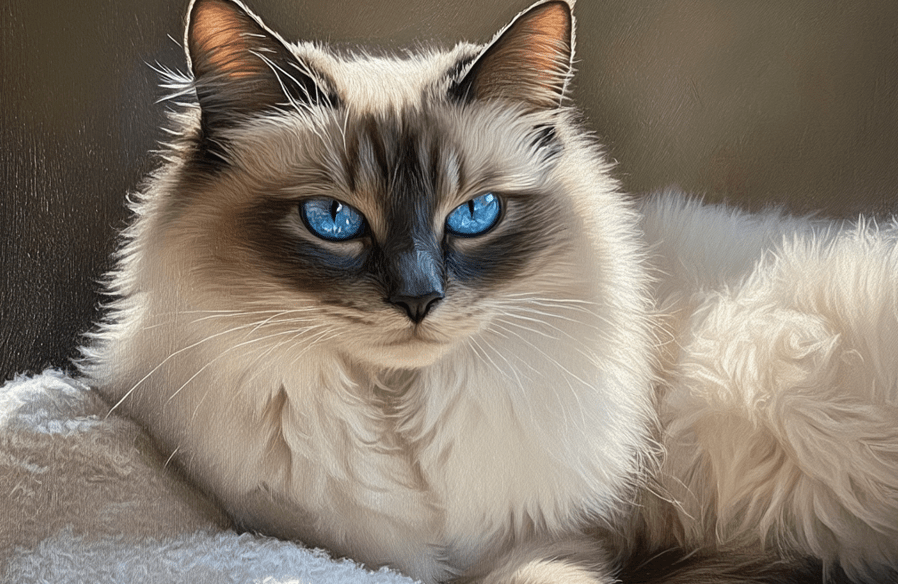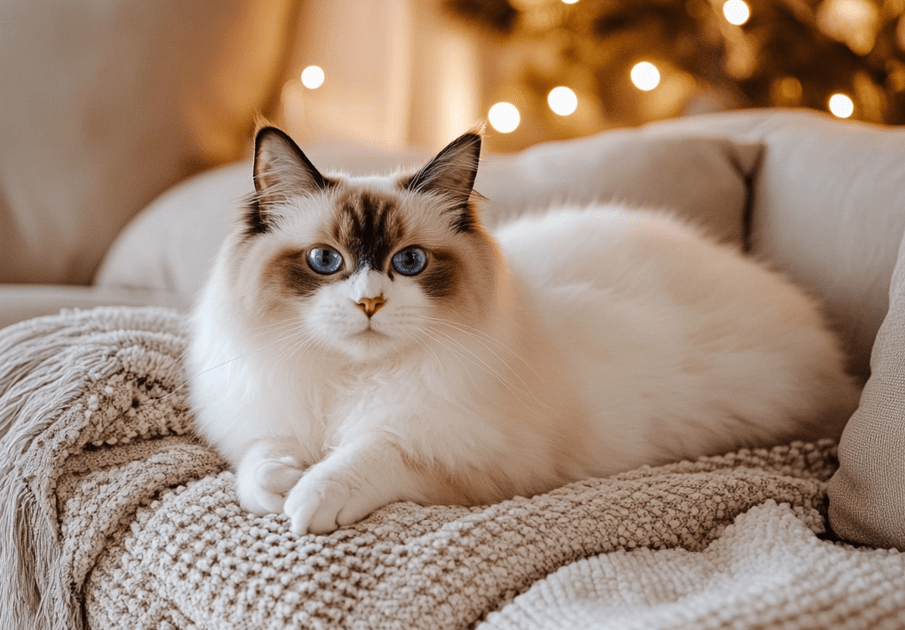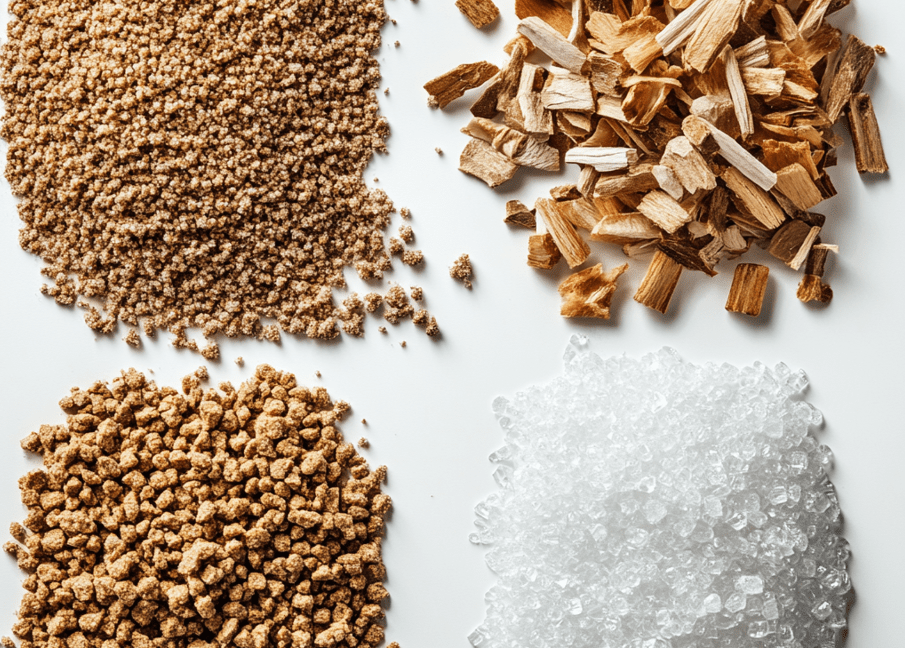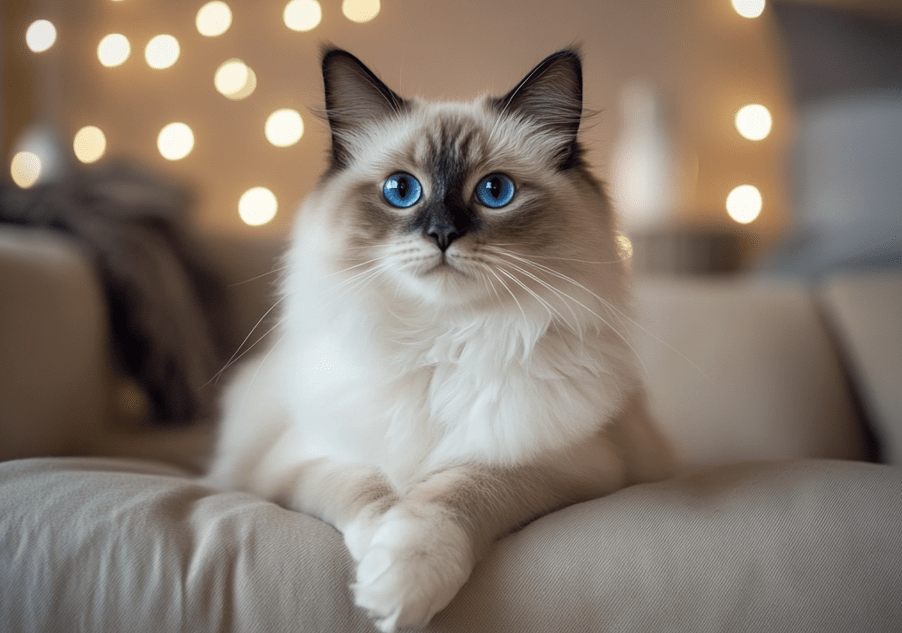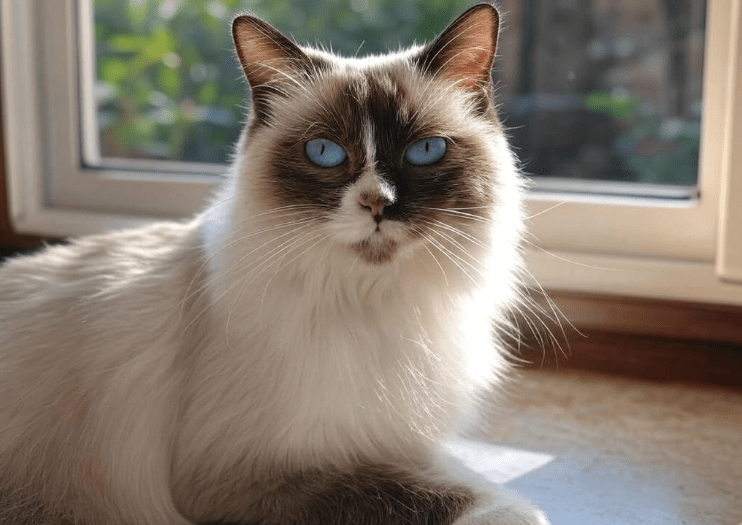
Ragdoll cats are prone to overeating, a trait that can lead to obesity and health issues if not addressed. These affectionate, floppy felines are beloved for their gentle temperament and striking blue eyes, but their love for food can sometimes get the better of them. Understanding why Ragdolls tend to overeat and implementing strategies to manage their diet is crucial for their long-term health and happiness. This comprehensive guide explores the reasons behind their overeating tendencies and provides actionable solutions to help you keep your Ragdoll fit and healthy.
Understanding Why Ragdoll Cats Are Prone to Overeating
Ragdolls, with their laid-back personalities and large, sturdy frames, have unique characteristics that contribute to their tendency to overeat. Below are the primary reasons behind this behavior:
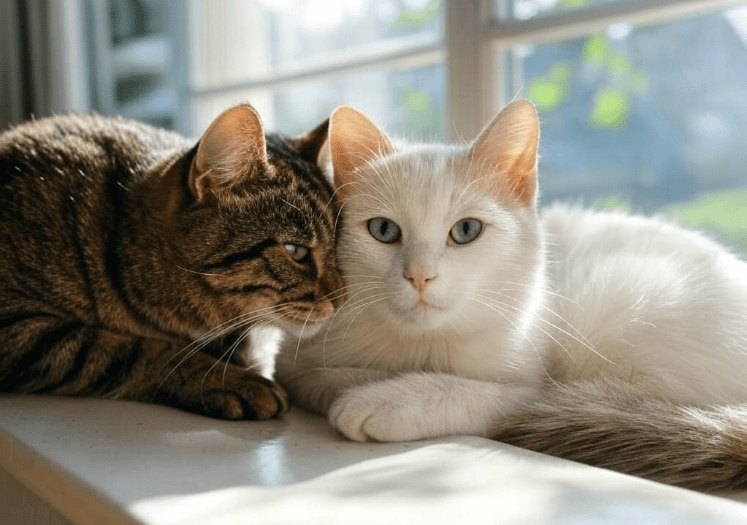
1. Genetic and Breed Characteristics
Ragdolls are a large breed, often weighing between 10-20 pounds, with some males even exceeding this range. Their size and slower metabolism can make them more susceptible to weight gain. Unlike more active breeds, Ragdolls are generally calm and less likely to burn off excess calories through vigorous play, leading to a higher risk of overeating and obesity.
2. Food Motivation
Ragdolls are known for their food-driven nature. Their love for treats and meals can stem from their desire to please their owners, making them eager to eat whenever food is offered. This food motivation can lead to overeating if portions aren’t carefully controlled.
3. Boredom and Lack of Stimulation
Ragdolls are intelligent and social, but their relaxed demeanor means they may not seek out physical activity on their own. When bored or understimulated, they may turn to food for comfort or entertainment, a behavior known as emotional eating. This is particularly common in indoor Ragdolls with limited environmental enrichment.
4. Free-Feeding Habits
Many Ragdoll owners practice free-feeding, leaving food out all day for their cats to graze. While convenient, this feeding method can encourage overeating, as Ragdolls may eat out of habit rather than hunger. Their docile nature makes them less likely to self-regulate their intake.
5. Stress or Anxiety
Though Ragdolls are generally easygoing, changes in their environment—such as new pets, moving, or altered routines—can cause stress. Some Ragdolls cope by overeating, using food as a source of comfort. This behavior can become habitual if the underlying stress isn’t addressed.
6. Medical Factors
Certain medical conditions, such as hypothyroidism or diabetes, can increase a Ragdoll’s appetite. Additionally, medications like steroids may stimulate hunger. If your Ragdoll’s eating habits change suddenly, a veterinary checkup is essential to rule out health issues.
The Risks of Overeating in Ragdoll Cats
Overeating can lead to obesity, which poses significant health risks for Ragdolls. These include:
Joint Problems: Excess weight puts strain on joints, increasing the risk of arthritis, especially in a large breed like the Ragdoll.
Diabetes: Obesity is a major risk factor for feline diabetes, which requires lifelong management.
Heart Disease: Extra weight can stress the heart, leading to cardiovascular issues.
Reduced Lifespan: Obese cats are more likely to develop chronic conditions that shorten their lives.
Decreased Quality of Life: Overweight Ragdolls may struggle with mobility, grooming, and play, reducing their overall well-being.
Preventing overeating is key to avoiding these risks and ensuring your Ragdoll lives a long, healthy life.
How to Stop Your Ragdoll Cat from Overeating
Managing your Ragdoll’s eating habits requires a combination of dietary control, environmental enrichment, and lifestyle changes. Below is a detailed, step-by-step guide to help you curb overeating and promote a healthy weight.
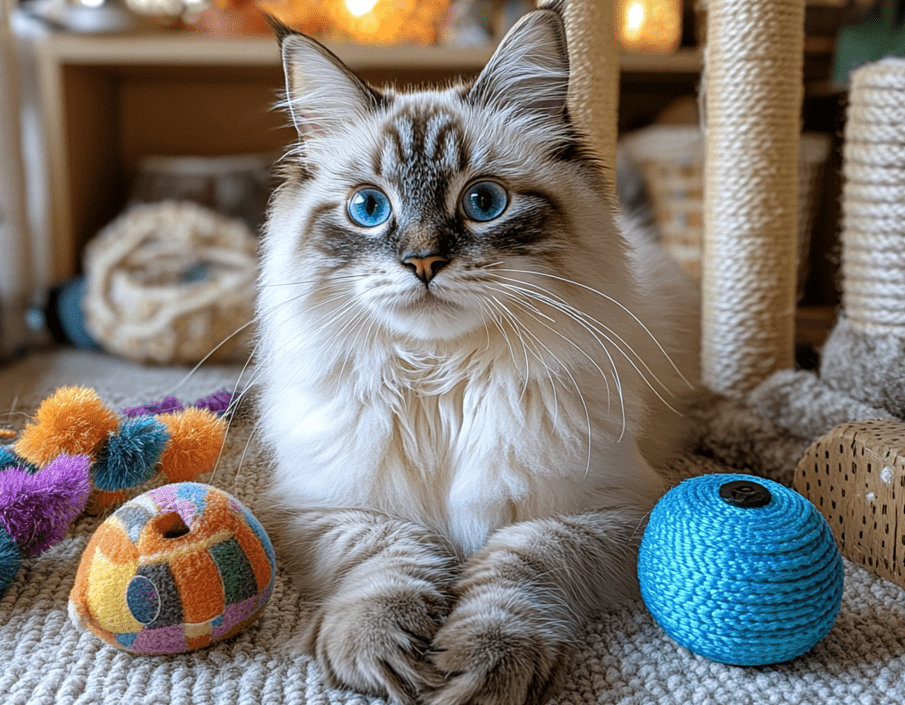
1. Consult a Veterinarian
Before making changes to your Ragdoll’s diet or routine, consult a veterinarian to assess their current weight, health, and nutritional needs. Your vet can:
1.Determine your cat’s ideal weight and body condition score.
2.Rule out medical causes of overeating, such as thyroid issues or diabetes.
3.Recommend a high-quality, balanced diet tailored to your Ragdoll’s age, size, and activity level.
Regular vet checkups are essential to monitor your Ragdoll’s progress and adjust their plan as needed.
2. Switch to Portion-Controlled Feeding
Free-feeding often leads to overeating, so transition your Ragdoll to scheduled, portion-controlled meals. Here’s how:
Determine Daily Calorie Needs: Your vet can calculate the appropriate calorie intake based on your Ragdoll’s weight and activity level. For example, a 12-pound Ragdoll may need 200-250 calories per day to maintain a healthy weight.
Measure Portions: Use a measuring cup or kitchen scale to ensure accurate portions. Divide the daily food allowance into 2-3 meals to prevent hunger and stabilize metabolism.
Use High-Quality Food: Choose a premium cat food with high protein and low carbohydrate content to keep your Ragdoll satisfied. Wet food can be particularly effective, as it’s more filling and helps with hydration.
Avoid Over-Treating: Limit treats to 10% or less of your Ragdoll’s daily calories. Opt for low-calorie treats or use kibble from their daily portion as rewards.
3. Use Puzzle Feeders and Slow Feeders
Ragdolls are intelligent and enjoy mental challenges. Puzzle feeders and slow feeders can make mealtime more engaging while preventing overeating.
Puzzle Feeders: These devices require your Ragdoll to work for their food by pawing, rolling, or solving simple puzzles. They slow eating and provide mental stimulation.
Slow Feeders: Bowls with ridges or obstacles force your cat to eat more slowly, reducing the risk of gobbling food too quickly.
DIY Options: Create a homemade puzzle feeder by scattering kibble in a cardboard box with holes or hiding food in rolled-up towels.
These tools tap into your Ragdoll’s problem-solving instincts, making meals both fun and satisfying.
4. Increase Physical Activity
Exercise is crucial for burning calories and preventing boredom-related overeating. Ragdolls may not be as active as other breeds, but they can be encouraged to move with the right stimuli. Try these ideas:
Interactive Play: Use feather wands, laser pointers, or balls to engage your Ragdoll in 10-15 minute play sessions twice daily. Mimic prey movements to spark their hunting instincts.
Cat Trees and Climbing Structures: Provide vertical spaces for climbing and jumping, which Ragdolls enjoy despite their relaxed nature.
Toy Rotation: Rotate toys weekly to keep your Ragdoll interested. Simple items like crinkle balls or cardboard boxes can be surprisingly effective.
Supervised Outdoor Time: If safe, allow your Ragdoll to explore a secure outdoor enclosure or leash-walk them for fresh air and stimulation.
Regular activity not only helps with weight management but also reduces stress and boredom.
5. Enrich Their Environment
A stimulating environment keeps your Ragdoll mentally engaged, reducing the urge to overeat out of boredom. Consider these enrichment strategies:
Window Perches: Place a perch near a window for bird-watching, a favorite Ragdoll pastime.
Scratching Posts: Provide sturdy scratching posts to satisfy their scratching instincts and encourage physical activity.
Hideaways: Offer cozy spots like cat beds or tunnels where your Ragdoll can retreat, reducing stress-related eating.
Social Interaction: Spend quality time with your Ragdoll through petting, grooming, or training. Their social nature means they thrive on human attention.
6. Address Stress and Anxiety
If your Ragdoll is overeating due to stress, identify and address the cause. Common stressors include:
1.Changes in routine or environment.
2.Lack of attention or companionship.
3.Conflicts with other pets.
To help, maintain a consistent schedule, provide a quiet space, and consider pheromone diffusers like Feliway to create a calming atmosphere. If stress persists, consult a veterinarian or feline behaviorist.
7. Monitor Weight and Adjust as Needed
Track your Ragdoll’s weight monthly to ensure they’re on the right path. Use a pet scale or weigh yourself with and without your cat to calculate their weight. If they’re not losing weight or continue to overeat, revisit their diet and activity plan with your vet. Gradual weight loss (1-2% of body weight per month) is safest for cats.
Common Challenges and Solutions
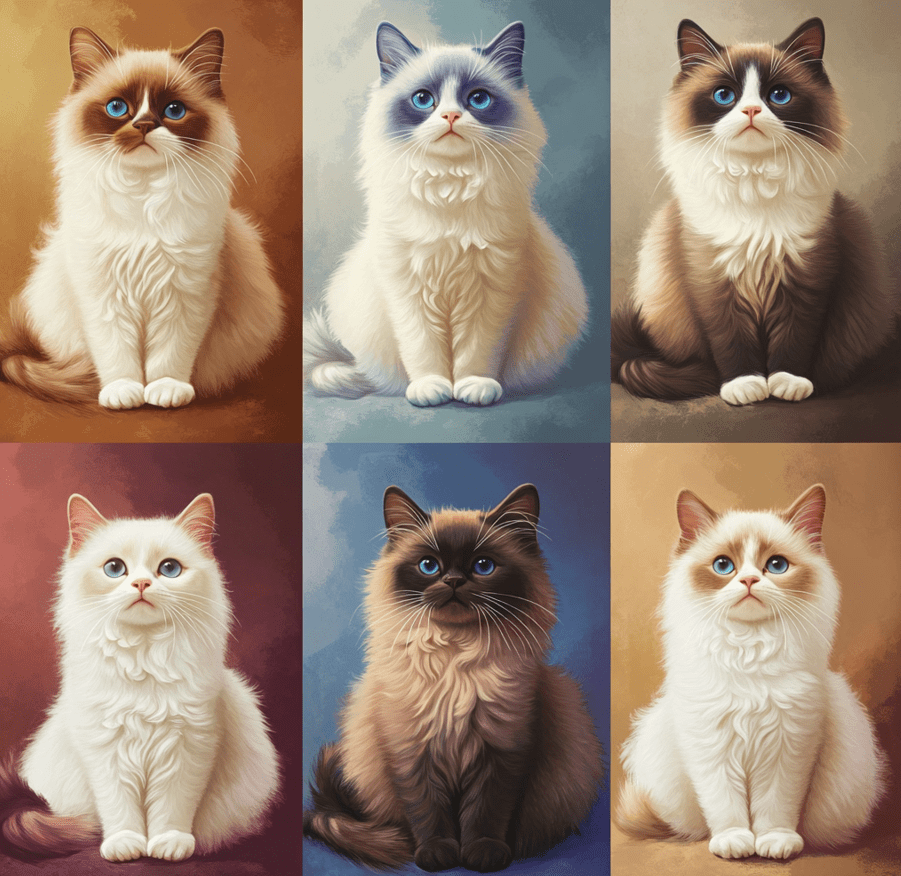
Challenge 1: Your Ragdoll Begs for Food
Solution: Ignore begging and stick to scheduled meals. Distract them with play or affection when they beg. Ensure their diet is satisfying by choosing high-protein, filling foods.
Challenge 2: Your Ragdoll Steals Food
Solution: Store human and pet food securely. Feed your Ragdoll in a separate area from other pets to prevent food theft. Use puzzle feeders to keep them occupied during meals.
Challenge 3: Your Ragdoll Loses Interest in Play
Solution: Experiment with new toys or play styles to find what excites them. Short, frequent play sessions are more effective than long ones. Involve family members to keep things varied.
Challenge 4: Weight Loss Is Slow
Solution: Weight loss in cats should be gradual to avoid health risks like hepatic lipidosis. Work with your vet to adjust calories or increase exercise without cutting food too drastically.
The Importance of Preventing Overeating
Preventing overeating is easier than reversing obesity, especially for Ragdolls, who are prone to weight gain. By addressing their eating habits early, you can:
Extend Their Lifespan: Healthy weight reduces the risk of chronic diseases, helping your Ragdoll live longer.
Improve Mobility: A fit Ragdoll is more active and able to groom themselves comfortably.
Enhance Mood: Proper diet and exercise boost mental well-being, keeping your Ragdoll content.
Save on Vet Costs: Preventing obesity-related illnesses reduces the need for costly treatments.
Why Ragdolls Are Unique
Ragdolls’ gentle, food-motivated nature makes them particularly susceptible to overeating, but it also makes them responsive to consistent, positive changes. Their desire to bond with their owners means they’re likely to adapt to new routines if approached with patience and care. Tailoring your approach to their personality—whether they love treats, play, or cuddles—will make managing their diet more effective.
Safety Considerations
When addressing overeating, keep these safety tips in mind:
Avoid Crash Diets: Rapid weight loss can cause serious health issues in cats. Follow your vet’s guidance for safe weight management.
Check Food Quality: Ensure all food and treats are free of harmful additives or fillers.
Monitor for Illness: Sudden changes in appetite or weight may indicate health problems. Seek veterinary advice promptly.
Use Safe Toys: Choose durable, cat-safe toys and enrichment items to prevent choking or injury.
Conclusion
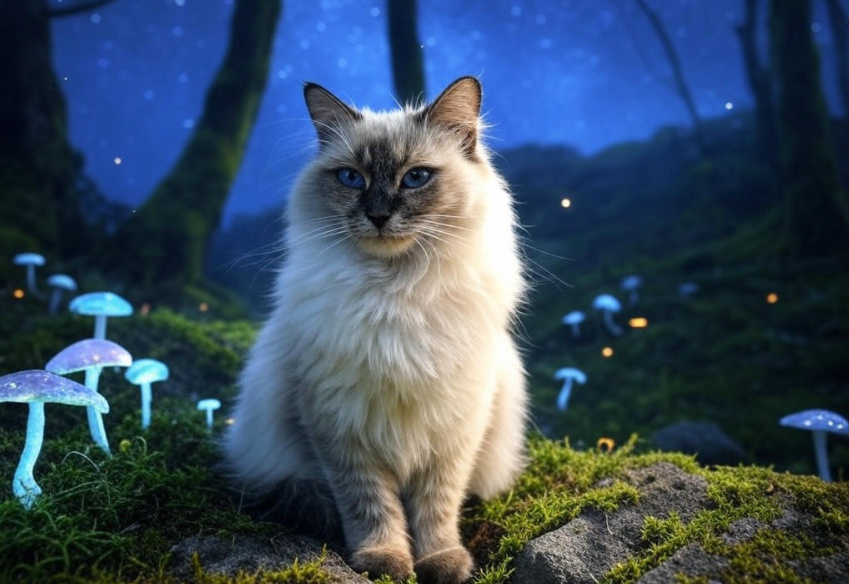
Ragdoll cats are prone to overeating due to their genetics, food motivation, and relaxed lifestyle, but with the right strategies, you can help them maintain a healthy weight. By consulting a veterinarian, controlling portions, increasing activity, and enriching their environment, you’ll address the root causes of overeating while keeping your Ragdoll happy and engaged. This guide offers everything you need to create a tailored plan for your Ragdoll, ensuring they thrive for years to come.
Start implementing these tips today, and watch your Ragdoll flourish as a fit, vibrant companion. With dedication and love, you can prevent overeating and give your cat the healthy, fulfilling life they deserve.

